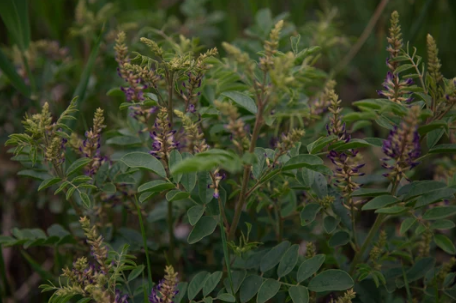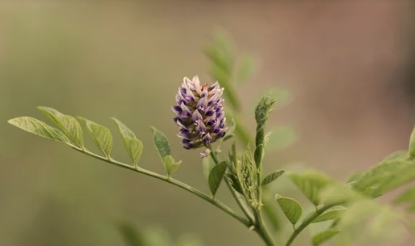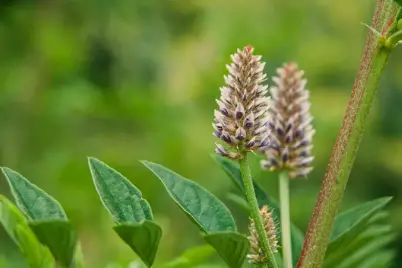Licorice root, with its distinct flavor and medicinal properties, has captivated the hearts and taste buds of people for centuries.
Whether you are a gardening enthusiast or simply curious about growing licorice root, understanding its ideal growing zones is crucial for successful cultivation.
In this blog post, we will delve into the fascinating world of licorice root and explore its preferred growing zones, along with essential tips for cultivating this remarkable herb.
What Is Licorice Root?

Licorice root (Glycyrrhiza glabra) is a perennial herbaceous plant native to the Mediterranean region and parts of Asia.
It has a long history of medicinal use and is prized for its sweet flavor, which comes from the compound glycyrrhizin.
Licorice root has been used in traditional medicine for its expectorant, anti-inflammatory, and soothing properties.
Moreover, it plays a significant role in the confectionery industry, where it is utilized to create licorice candies and flavor various food and beverage products.
Growing Zones pH
To successfully grow licorice root, it is essential to understand its preferred growing conditions, including climate, soil, and habitat.
Licorice root thrives in areas with a mild climate and specific temperature ranges.
It requires a significant amount of sunlight, preferably full sun, and thrives in well-draining soil with a pH level of 6.0 to 8.0.
Understanding its natural habitat can provide valuable insights into replicating optimal growing conditions.
Licorice Root Growing Zones Table

Licorice Root Growing Zones
The USDA Hardiness Zones are widely used to determine the suitability of various plants for specific regions.
Licorice root’s growing zones primarily depend on the average minimum winter temperatures experienced in a particular area. Below is a table outlining the USDA Hardiness Zones and their corresponding temperature ranges:
| USDA Hardiness Zone | Temperature Range (°F) |
|---|---|
| Zone 4 | -30 to -20 |
| Zone 5 | -20 to -10 |
| Zone 6 | -10 to 0 |
| Zone 7 | 0 to 10 |
| Zone 8 | 10 to 20 |
| Zone 9 | 20 to 30 |
| Zone 10 | 30 to 40 |
| Zone 11 | 40 to 50 |
Licorice root is typically well-suited for Zones 7 to 9, where the temperatures align with its preferred range.
However, with proper adjustments, licorice root can be cultivated in other zones as well. Let’s explore some zone-specific recommendations and challenges:
Zone 4
- Growing licorice root in Zone 4 can be challenging due to the extreme cold temperatures.
- Consider using raised beds or containers to provide additional insulation.
- Apply organic mulch to protect the root system during winter.
- Opt for cold-hardy licorice root varieties, such as ‘Russian Licorice’ or ‘Northern Licorice.’
Zone 7
- Zone 7 provides ideal conditions for licorice root cultivation.
- Ensure adequate drainage by amending heavy clay soils.
- Provide support structures for licorice root plants, as they can grow up to four feet tall.
- Maintain a regular watering schedule, ensuring the soil remains consistently moist.
Beyond Zone 7
- In zones with higher temperatures, such as Zone 8 and above, ensure adequate shading to protect the plants from excessive heat.
- Amend the soil with organic matter to improve moisture retention and prevent rapid drying.
- Consider providing additional irrigation during prolonged dry spells.
Tips for Cultivating Licorice Root

Successfully growing licorice root requires careful attention to various aspects, from selecting suitable varieties to proper planting, maintenance, and harvesting techniques. Here are some essential tips to help you cultivate licorice root effectively:
Selecting Licorice Root Varieties:
- Choose licorice root varieties that are well-suited for your growing zone.
- Consider characteristics such as flavor profile, yield, and adaptability to your specific soil and climate conditions.
- Some popular licorice root varieties include ‘Glycyrrhiza glabra,’ ‘Glycyrrhiza uralensis,’ and ‘Chinese Licorice.’
Preparing the Soil:
- Perform a soil test to determine the pH level and nutrient composition of your soil.
- Licorice root prefers well-draining soil, so amend heavy clay soils with organic matter to improve drainage.
- Maintain a soil pH between 6.0 and 8.0 by adding lime or sulfur as necessary.
Planting and Propagation Methods:
- Start licorice root from seeds or purchase bare-root plants from reputable nurseries.
- Sow seeds directly into the ground in early spring or start them indoors six weeks before the last frost.
- Transplant young licorice root plants outdoors when the soil has warmed up.
- Licorice root can also be propagated through root division during early spring or fall.
Maintenance and Care:
- Water licorice root consistently, aiming for moist, but not waterlogged, soil.
- Apply organic mulch around the plants to conserve moisture and suppress weed growth.
- Fertilize sparingly using a balanced organic fertilizer during the growing season.
- Monitor for pests and diseases, such as aphids or root rot, and take appropriate measures for control.
Harvesting and Processing:
- Licorice root is typically harvested in the fall, after three to four years of growth.
- Carefully dig up the roots, ensuring minimal damage.
- Wash and remove any excess soil from the roots.
- Dry the roots thoroughly, either by air-drying or using a dehydrator, until they become brittle.
- Store dried licorice roots in an airtight container in a cool, dark place to preserve their medicinal properties.
Licorice Root Beyond the Growing Zone:

Growing licorice root outside its preferred zones is possible through various techniques:
Container Gardening:
- Plant licorice roots in large containers or raised beds that can be moved indoors during colder months.
- Ensure adequate drainage in the containers to prevent root rot.
- Place the containers in a sunny spot and provide regular watering and fertilization.
Indoor Cultivation Techniques:
- Use grow lights to supplement natural sunlight in indoor settings.
- Control temperature and humidity levels to mimic licorice root’s preferred conditions.
- Pollinate the flowers manually using a small brush or gentle shaking to aid the fruit set.
Licorice Root in Herbal Medicine:
- Explore the medicinal properties of licorice root, such as its expectorant and anti-inflammatory effects.
- Consult with a healthcare professional or herbalist for guidance on incorporating licorice root into your wellness routine.
Conclusion
Growing licorice root can be an exciting endeavor for those willing to explore its preferred growing zones.
So, with the ideal climate, soil conditions, and cultivation techniques, enthusiasts can successfully grow this remarkable herb in their gardens or even indoors.
Whether you are drawn to its unique flavor, its historical significance, or its medicinal properties, licorice root is a captivating plant worth exploring and nurturing.
Note: Licorice root cultivation may have legal restrictions or regulations in certain regions. It is crucial to research and adhere to local laws and guidelines regarding licorice root cultivation, harvesting, and processing. Additionally, always consult with local gardening experts or agricultural extension offices for specific guidance on licorice root cultivation in your area.
References:
- National Center for Complementary and Integrative Health. (2021). Licorice Root. Retrieved from https://www.nccih.nih.gov/health/licorice-root
- United States Department of Agriculture. (2022). USDA Plant Hardiness Zone Map. Retrieved from https://planthardiness.ars.usda.gov/
- University of Maryland Medical Center. (2022). Licorice. Retrieved from https://www.umm.edu/health/medical/altmed/herb/licorice




